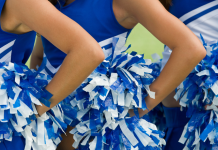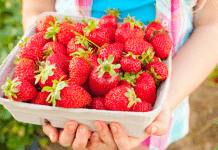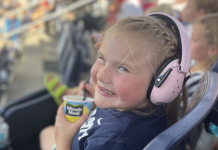For most children, Halloween is an exciting time of year – from pumpkin carving to costume parties, to trick or treating. But for many families of special needs children, Halloween can be a daunting experience – from the costumes to the sensory overload of lights and sound to the very act of knocking on a door to trick or treat. I hope to provide tips for both parents and caregivers of special needs children to navigate the holiday as well as suggestions for everyone to create an inclusive Halloween experience.
Halloween Tips for Families of Special Needs Children
For the child who struggles with lights, sounds, and scares:
While trick or treating and haunted houses can be fun for many kids, knowing your child’s comfort level is very important. Feel free to avoid any houses that seem overwhelming with bright lights, sounds, or potential scary figures. Oftentimes, trunk or treats are perfect for these kiddos. Taking place in the daylight, they usually have very few special effects and can be navigated quickly, making it easy to return to the car if your child gets overwhelmed. Also, bring comfort items with you that will help your child such as noise canceling headphones, weighted blankets or other soothing objects. Pack water bottles and snacks for your kids as well.
For the child with low muscle tone and energy or low emotional tolerance:
Some children struggle to keep up physically with the demands of trick or treating. If you are a family with children of multiple abilities, split up. We often take a wagon with us (a great place to also include sensory objects for safety) and when our child gets tired, he can ride in the wagon. If your child has low tolerance for new settings, plan to just go around the block to a few houses. For us, this looks like myself or my husband coming home early with our autistic child after a certain number of houses and letting the other parent continue on. Setting low expectations and creating safe spaces will help reduce meltdowns.

For the child with dietary restrictions:
We are always grateful for those who provide non-food items, but candy is often the only thing available. Before going out, I suggest putting together a treat bag of non-candy small toys, much like a Boo bag. You can even let your child know about it ahead of time if it makes things easier. Then, when they get home, have them trade in their candy for a special bag of safe treats and fun toys, like bubbles, sensory toys, stickers, and activity books. This is a great way to let them enjoy the holiday without having them feel like they are missing out.
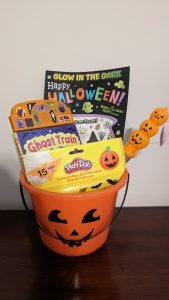
In the end, feel free to opt out of whatever doesn’t work for you. You can have a fun indoor Halloween experience of decorating pumpkins or making spooky treats without the stress of trick or treating. You can go trick or treating in regular clothing if the demands of a costume are too stressful. Or, you can just create your own traditions. Curl up and watch a movie. Make fun crafts. Have a dance party. You get to make the rules and provide the best environment for your child.
To those mommas struggling to make it through these challenges – I see you. You are doing amazing. Keep going.
Tips for those who want to create an inclusive Halloween experience
Thank you in advance for your efforts. Even the smallest things can make a huge difference in our children’s lives.
- Provide a bowl of candy and a bowl of non-candy treats. Most stores have bulk offerings of items like mini bubbles, stickers, spider rings, bouncy balls, or mini play doh. These are great not only for children with dietary restrictions but also for kids under 2 who may not be able to eat candy.
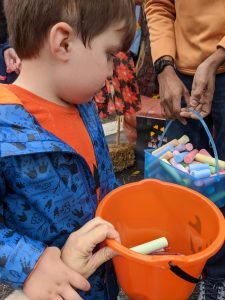
2. If you have a steep driveway, many stairs, or a yard full of scary haunted decorations, consider leaving a few treats in a bowl at the bottom of the driveway (with a note that it is specifically for kids who can’t come to the door). This is helpful for those who either physically or emotionally are unable to navigate their way through.
3. Have grace and always assume the best. My child will not be able to say “trick or treat” to you or “thank you” after taking candy. He is functionally non-verbal. That being said, assume children not speaking these words aren’t rude. My child also struggles with fine motor skills so will likely grab a handful rather than use a pincer grasp to pick one or two items. Please assume that he struggles with these skills and not that he is inconsiderate. Many children will not show up in costume, often due to the fact that they cannot tolerate certain clothing. Please assume they are not trying to be rude.
For those of you out there who see these children and go out of your way to accommodate them, thank you. We parents see you and your kindness and we appreciate you modeling inclusion for your children.


